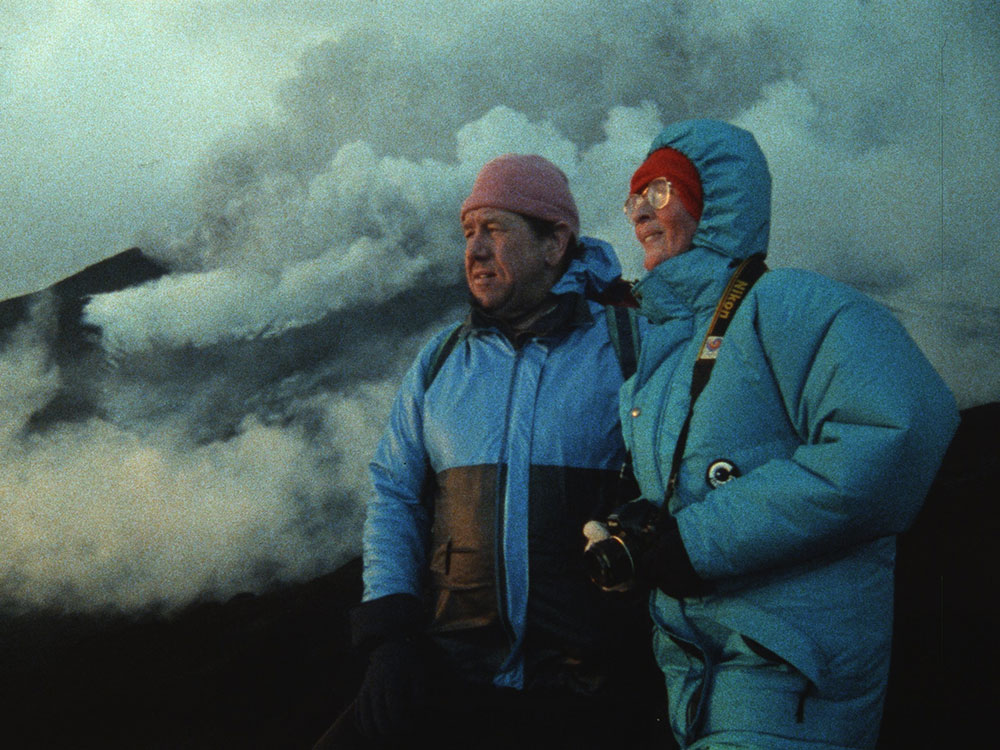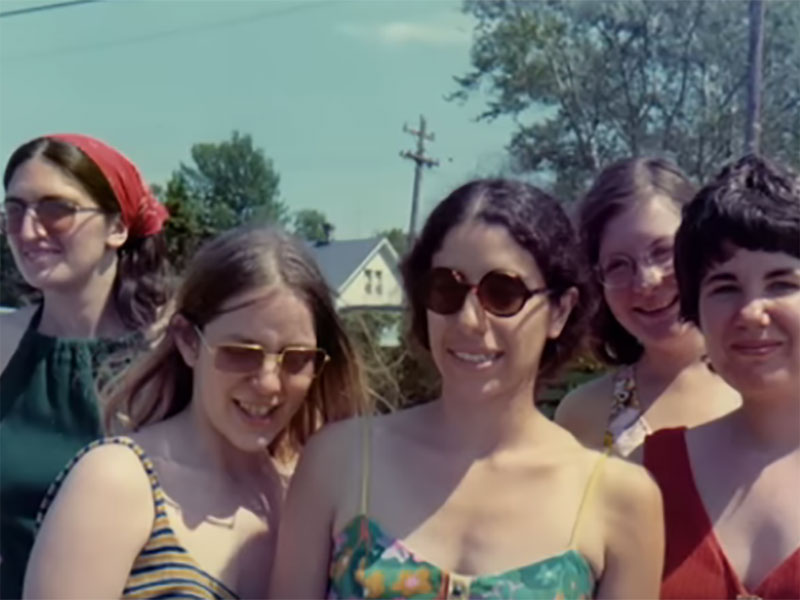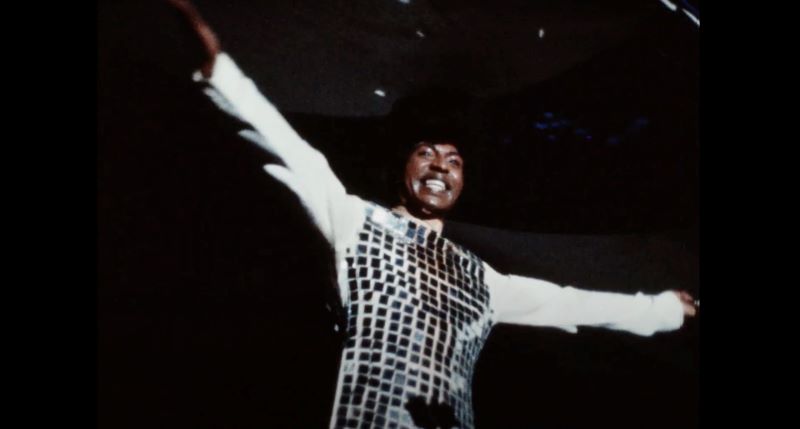Reality is some wild stuff. If you need a reminder of this truism, you need only take a quick look at this year’s crop of documentaries. From volcanologists in love to legendary rock stars to underground abortion providers, there is almost nothing that could be dreamed up in the fevered brain of screenwriters that hasn’t already taken place in the real world.
The non-fiction contenders were strong this year, and I’ve narrowed down my top picks for 2022 to four stellar films.
Let’s start with the most rocking of the bunch.
An early gift to self: the joy of rock and roll
In 1969, Toronto’s hippiedom was in full flower. What better time to put on a major rock concert? Revival ’69: The Concert that Rocked the World is a riotous ode to rock music, its people and a moment in time.
Coming off several previous successes, concert promotor John Brower and his partner Ken Walker were brimming with the confidence of youth and optimism. When Brower concocted the idea for a show featuring the progenitors of rock and roll, it looked like a winning proposition. Bring Jerry Lee Lewis, Little Richard, Bo Diddley and Gene Vincent together on the same bill. What could go wrong?
Nothing is ever all that easy in the world of rock.
At the time, these artists (also known as old timers at the time) were playing small venues and Vegas revues. No one appeared much interested and ticket sales for the concert in Toronto were glacially slow. Even the announcement that the Doors would be headlining the show didn’t help much.
With pressure mounting, Brower was advised to get someone even bigger than Jim Morrison to pull in the punters. So, he did what anyone would do in such a situation. He called up John Lennon in London, at the time in the first blush of his love affair with Yoko Ono. Brower asked if Lennon wanted to perform.
The Toronto Rock n’ Roll Revival became the stuff of legend when Lennon unexpectedly agreed and pulled together a collection of superstars including Eric Clapton and Alan White (a drummer who was later part of the band Yes).
The newly dubbed Plastic Ono Band took to the stage in Toronto for their first-ever performance on Sept. 13, 1969.
If your jaw is already on the floor, prepare thyself. This is just the beginning of a saga. Director Ron Chapman captures the moment in all its heady excess, pulling together interviews, animation and archival footage (some of the Super 8 footage in the film has never been seen before). The result is a singular torch song to a place, a people and music itself.
Artist Mathew den Boer’s animated sequences are charming and idiosyncratic, capturing all of the goofiness and the glory of the period.
When MC Kim Fowley suggested that audience members raise their lighters to create a constellation of small flickering flames, it became a widespread ritual at rock concerts that continues today. It’s a perfect image to summarize much of what the concert heralded: iconic moments in music that continue to filter down to present day.
I must admit I watched Revival ’69 with a maniac’s grin. The irrepressible joy of seeing these musicians in full flight is so wondrous that it’s practically incandescent, lighting one up like white phosphorous. Consider the pure joy of this film a present to yourself! See it and celebrate the wondrous thing that is music.
Revival ’69: The Concert that Rocked the World screens at the Vancity Theatre in Vancouver Dec. 19 through Jan. 4.

Fiery, fatal passion
Life has an odd predilection for the twists and turns of outrageous fortune. Fate, in other words. Nothing makes this clearer than the story of volcanologists Katia and Maurice Krafft. Born in the same part of France, the couple met on a blind date, married and worked together on their shared passion for the remainder of their lives. They died doing exactly what they loved, swallowed whole by a superheated gas cloud from a volcanic eruption in Japan in 1991.
Fire of Love director Sara Dosa has a veritable goldmine at her fingertips, with access to hundreds of hours of footage shot by the couple over the course of their career. She wields it like visual poetry, capturing the Kraffts in action in their perky red caps, standing at the edge of craters, backlit by the blazing electric orange of liquid magma. The story is given another quirky layer with narration from actress Miranda July, whose wry and dry delivery has the curious quality of combining absurdity and pathos in equal measure.
The couple’s life and work proved so fascinating that one film was not enough to contain it all. Werner Herzog even made his own film about the Kraffts. What it lacks in July-isms, it makes up for Herzogian intonations.
Their relationship was not without its ups and downs. The scene in Fire of Love where Katia rages on the shore while Maurice takes to an acid lake in a rubber dinghy is funny, terrifying and like many moments in the film, bordering on the unbelievable. Yet it all really happened.
When the Kraffts’ story comes to its spectacular end, what endures is not only the ability of humans to dedicate their lives and every ounce of their ability to research and discovery, but the elemental beauty of the Earth itself, captured in the act of being born. The colours alone in the film rivet one’s attention. In addition to the neon orange, deep red and yellow ochre of melted rock, there is also the silver-suited pair dancing at the very edge of destruction.
The convergence of love, eruptions and ravishing images demands repeated viewings. Somewhere Wes Anderson is probably plotting a dramatization of the story, but nothing could be stranger or more extraordinary than reality.

Janes, united
Another story that was powerful enough to warrant a couple of documentaries as well as a fictional adaptation from director and star Elizabeth Banks was that of the underground abortion collective called the Janes. One of Jane’s original members Judith Arcana puts it clearly: “We were ordinary women trying to save women’s lives. But we were criminals. We were felons.” We follow Arcana and her peers in The Janes, a documentary about early abortion care providers that feels terribly prescient for the year 2022.
In the late 1960s and early ’70s, women were not allowed to get a credit card without their husband’s permission, contraception was hard to come by even for married women, and abortion was considered felony homicide. The Jane Collective, otherwise known as the Abortion Counseling Service of Women’s Liberation, comprised ordinary women, college students, community organizers and mothers, who worked to provide women reproductive choices. The Janes put out the word through a variety of grassroots methods, posting on bulletin boards and running ads in underground newspapers. They adapted their methods as they went along, eventually helping more than 11,000 women get abortions.
After a police sting operation resulted in seven members of the Jane Collective being arrested and charged with more than 110 years of prison time, the group hired a lawyer and went to war. It was Roe v. Wade that ultimately resulted in their exoneration.
Directors Tia Lessin and Emma Pildes’ film had the odd fate of being released just prior to Roe v. Wade being undone by the U.S. Supreme Court. Since the film’s release things have gotten even more fraught, dangerous and in a few instances downright horrific.
The thing that is most difficult to accept, then as now, is the cruelty of laws that force people to bear children with no hope of life, laws that force rape and incest survivors to carry their abusers’ children to term. But the greater and more resonant aspect of the film is the collective power of women working together, with courage and compassion to help each other.
They did it for a song
Another remarkable depiction of the swings and roundabouts of fate finds its form in Hallelujah: Leonard Cohen, A Journey, A Song.
Taking inspiration from Alan Light’s book The Holy or the Broken: Leonard Cohen, Jeff Buckley and the Unlikely Ascent of Hallelujah, co-directors Dayna Goldfine and Dan Geller centre the story on the song’s long and circuitous path to global canonization.
As Rolling Stone journalist Larry “Ratso” Sloman explains in the film, Hallelujah had a very long gestation and not a particularly auspicious entry into the world. After writing more than 180 verses for the song, it was finally released in 1984 on Cohen’s album Various Positions. Walter Yetnikoff, the then-president of Columbia Records, hated the record so much that he effectively squashed it.
That should have been the end of things, except that it wasn’t.
When John Cale heard Cohen perform the song at a club in New York City, the experience was so profound that he recorded his own version for the Cohen tribute album I’m Your Fan. Jeff Buckley accidentally stumbled across Cale’s version while staying a friend’s apartment, and the song became one of his signatures. From there, the chain of coincidences and serendipity continued until the music producer for the film Shrek included Cale’s version in the movie. From there it was a straight shot, perpendicularly upwards, as the song vaulted into immortality.
A parade of different artists has since offered their own interpretations, everything from the overwrought flourishes of k.d. lang to Willie Nelson’s more down-home version, and just about every flavour in between.
Along the way, the film collects a bevy of different tales, from Cohen’s beginnings as a musician to his later career with its prodigious highs and gnarly lows, but at the heart of the story is the mysterious process by which a song cements itself in human hearts and minds.
Even more curious are the capricious forces that come tripping down to rescue a piece of art from oblivion and exalt it forever. The number of times that Hallelujah would, could and should have fallen into darkness and obscurity are multiple. But each time, fate had other plans.
It’s a reminder that no matter how thin and sad the world might seem, there are miracles just around the corner, singing softly to themselves, awaiting discovery. ![]()
Read more: Film
















Tyee Commenting Guidelines
Comments that violate guidelines risk being deleted, and violations may result in a temporary or permanent user ban. Maintain the spirit of good conversation to stay in the discussion.
*Please note The Tyee is not a forum for spreading misinformation about COVID-19, denying its existence or minimizing its risk to public health.
Do:
Do not: